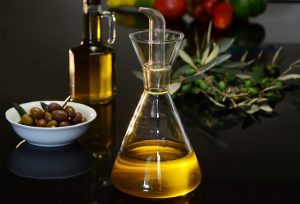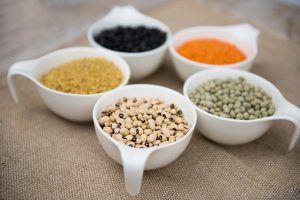Pulses: Nutrient-Dense Powerhouses for Your Weekly Diet
Pulses (lentils, beans, chickpeas, peas, soybeans) are globally valued for their diverse health bene…….
Pulses, a term that resonates across industries and disciplines, represent the rhythmic beats or signals that govern various systems and processes. From biological rhythms to technological innovations, pulses play a pivotal role in shaping our world. This article aims to unravel the multifaceted nature of pulses, exploring its historical evolution, global impact, economic implications, technological advancements, policy landscapes, challenges, successful case studies, and future prospects. By delving into these aspects, we seek to provide a comprehensive understanding of pulses and its significance in today’s complex and interconnected world.
At its core, a pulse refers to a recurring, oscillating, or intermittent signal that conveys information or triggers actions. It is a fundamental concept found in diverse fields such as biology, electronics, engineering, and computer science. In biological systems, pulses often manifest as rhythmic patterns like heartbeats or neuronal signals. In technological contexts, they can be digital signals in computing, electromagnetic waves in telecommunications, or even sound waves in audio processing.
Historically, the notion of pulses has its roots in ancient civilizations where early scientists and philosophers observed and studied natural rhythms. Over time, the understanding and application of pulses evolved with advancements in science and technology. From the mechanical clocks that utilized pulley systems to control time, to the digital circuits that process information at lightning speed, pulses have been both the driving force and the cornerstone of numerous innovations.
Pulses have a profound global impact, transcending geographical boundaries and influencing various sectors. Here’s an overview of key trends shaping the pulse landscape:
Digital Revolution: The digital age has revolutionized how pulses are generated, transmitted, and interpreted. Digital signals, including ones used in internet communication, audio/video streaming, and mobile networks, have become the backbone of modern connectivity. This trend continues to drive the demand for faster and more efficient pulse processing technologies.
Healthcare Advancements: In healthcare, pulses play a critical role in monitoring patient vital signs, diagnosing conditions, and guiding treatments. Wearable devices and remote patient monitoring systems rely on accurate pulse measurements, enabling early detection of health issues. Trends like telemedicine and personalized medicine further emphasize the importance of precise pulse analysis.
Internet of Things (IoT): The IoT revolution connects an array of devices, vehicles, and sensors, generating vast amounts of data. These interconnected devices communicate through pulses, creating a network that offers real-time insights and automation. As IoT expands into smart cities, agriculture, and industrial applications, the demand for robust pulse management systems grows.
Renewable Energy: Pulses are integral to renewable energy technologies like wind turbines and solar panels. Wind energy converters use pulses to capture and convert wind kinetic energy into electricity, while solar photovoltaic cells generate direct current (DC) pulses that power various systems. The integration of renewable sources is a global trend shaping the future of energy production.
The economic implications of pulses are multifaceted, impacting markets, industries, and global trade:
Market Dynamics: Pulses drive market trends in numerous sectors. For instance, the demand for faster internet speeds and data transmission has fueled the growth of telecommunications equipment manufacturers. Similarly, advancements in pulse-based medical diagnostics have boosted the healthcare technology market.
Investment Patterns: Technological innovations related to pulses attract significant investments. Venture capital firms and corporations pour funds into research and development (R&D) for more efficient pulse processing chips, advanced communication systems, and improved sensor technologies. These investments stimulate economic growth and create new job opportunities.
Global Trade: Pulses serve as enablers of international trade, facilitating the transfer of data, goods, and services across borders. High-speed digital pulses underpin global supply chains, ensuring efficient communication between manufacturers, distributors, and consumers worldwide.
Technological breakthroughs in pulse-related fields have been transformative, opening new avenues for innovation:
Pulse Coding and Compression: Advances in coding and compression techniques allow for more efficient transmission of digital pulses, reducing data loss and improving signal integrity. These technologies are crucial for high-definition video streaming, voice over internet protocol (VoIP), and wireless communication systems.
Internet Speed Enhancements: Innovations like fiber optics and 5G networks have revolutionized data transfer rates, enabling faster pulse transmission. These advancements support the growing demand for real-time applications, including virtual reality (VR), augmented reality (AR), and cloud computing services.
Biometric Authentication: Pulses are used in biometric authentication systems, such as heartbeat or vascular patterns recognition, offering secure and non-invasive identity verification. This technology is increasingly employed in security systems, banking, and access control mechanisms.
Artificial Intelligence (AI) and Machine Learning: AI algorithms can analyze complex pulse patterns, enabling advanced data processing and pattern recognition. In healthcare, for example, AI models can detect abnormal heart rhythms or diagnose diseases from electrocardiogram (ECG) pulses.
Governments worldwide recognize the importance of pulses in various policy domains:
Telecommunications Regulations: Regulatory bodies oversee telecommunication networks to ensure fair competition, consumer protection, and network security. These regulations shape the development and deployment of pulse-based communication technologies.
Healthcare Standards: Health authorities establish standards for medical devices that rely on pulse measurements, ensuring accuracy, safety, and efficacy. Compliance with these standards is mandatory for manufacturers, promoting reliable healthcare solutions.
Data Privacy Laws: With the increasing reliance on digital pulses for data transmission, privacy laws like the General Data Protection Regulation (GDPR) in Europe aim to protect individuals’ data from unauthorized access or misuse.
Despite its numerous advantages, the pulse landscape faces several challenges:
Security Threats: As more systems become dependent on pulses for communication, cybersecurity risks increase. Hackers can potentially manipulate or intercept digital pulses, leading to data breaches and system failures. Ensuring robust security measures is essential to protect sensitive information.
Signal Interference: In densely packed urban areas or highly automated industrial environments, pulse signals can experience interference from various sources. This interference may degrade signal quality, affecting communication, control systems, or medical devices.
Standardization and Compatibility: With numerous technologies utilizing pulses, ensuring interoperability and compatibility between different systems remains a challenge. Standardization efforts are crucial to prevent silos and promote seamless integration.
Several real-world applications have successfully leveraged pulses to drive innovation and improve lives:
Smart City Infrastructure: In cities like Singapore and Barcelona, pulse-based technologies power smart traffic management systems, efficient public transportation, and real-time air quality monitoring networks. These innovations enhance urban mobility, reduce congestion, and promote sustainable living.
Medical Diagnostics: Pulse oximeters, a common medical device, use light absorption to measure blood oxygen saturation levels through pulses. This non-invasive technique has saved countless lives during the COVID-19 pandemic by providing rapid, accurate diagnosis at point of care.
Automotive Safety Systems: Modern vehicles employ pulse sensors for advanced driver assistance systems (ADAS), including adaptive cruise control, lane-keeping assist, and collision avoidance. These systems use pulses to monitor vehicle dynamics and surrounding conditions, enhancing road safety.
The future of pulses holds immense potential across various sectors:
Quantum Computing: Quantum computing, with its promise of exponential speedup for complex computations, relies on manipulating quantum pulses. This emerging field could revolutionize optimization problems, drug discovery, and simulations in fields like finance and materials science.
Bioengineering: Advances in bioengineering may lead to more sophisticated pulse-based medical devices, including neural interfaces that allow direct communication between the brain and machines, potentially transforming rehabilitation and prosthetics.
Sustainable Energy Solutions: As renewable energy sources continue to gain prominence, pulses from wind and solar technologies will play a pivotal role in shaping a greener future. Innovations in pulse management and storage could enable more efficient integration of these resources into existing grids.
Pulses, as recurring rhythmic signals, have become the lifeblood of modern society, driving technological advancements, shaping global trends, and enhancing our daily lives. From ancient observations to cutting-edge innovations, the understanding and application of pulses have evolved exponentially. As we navigate an increasingly interconnected world, addressing challenges while harnessing the potential of pulses will be crucial for fostering economic growth, improving healthcare, and building sustainable communities. The ongoing exploration and development in pulse-related fields promise exciting possibilities for the future.

Pulses (lentils, beans, chickpeas, peas, soybeans) are globally valued for their diverse health bene…….

Unlocking the Power of Pulses: Nutritious Gems for Optimal HealthPulses, such as beans, lentils, and…….

Pulses are nutritious, providing 20% of daily protein needs and a range of vitamins, minerals, and f…….

Pulses are nutritious foods packed with vitamins, minerals, and fiber. They support digestion, lower…….

Pulses like lentils, beans, peas and chickpeas are highly nutritious, packed with protein, fiber, vi…….

Pulses are nutrient-rich foods like beans, lentils, and chickpeas, packed with fiber, protein, vitam…….

Pulses like beans, lentils, and chickpeas are nutrient-rich with plant-based protein, fiber, vitamin…….